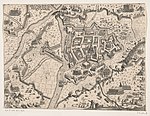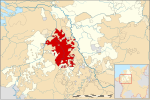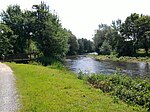Vogelsang Charterhouse
1478 establishments1802 disestablishmentsCarthusian monasteries in GermanyMonasteries in North Rhine-Westphalia

Vogelsang Charterhouse (German: Kartause zum Vogelsang bei Jülich; Latin: Domus compassionis Beatae Mariae in Cantavio prope Iuliacum) was a Carthusian monastery or charterhouse near Jülich in the present North Rhine-Westphalia, Germany, founded in 1478 and secularised during the mediatisation of Germany in 1802.
Excerpt from the Wikipedia article Vogelsang Charterhouse (License: CC BY-SA 3.0, Authors, Images).Vogelsang Charterhouse
Gut Kartaus,
Geographical coordinates (GPS) Address Nearby Places Show on map
Geographical coordinates (GPS)
| Latitude | Longitude |
|---|---|
| N 50.913333333333 ° | E 6.3772222222222 ° |
Address
Gut Kartaus
Gut Kartaus
52428
North Rhine-Westphalia, Germany
Open on Google Maps








